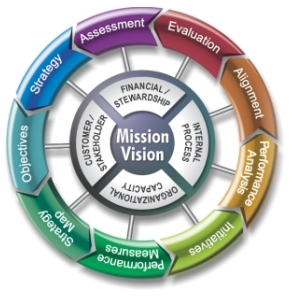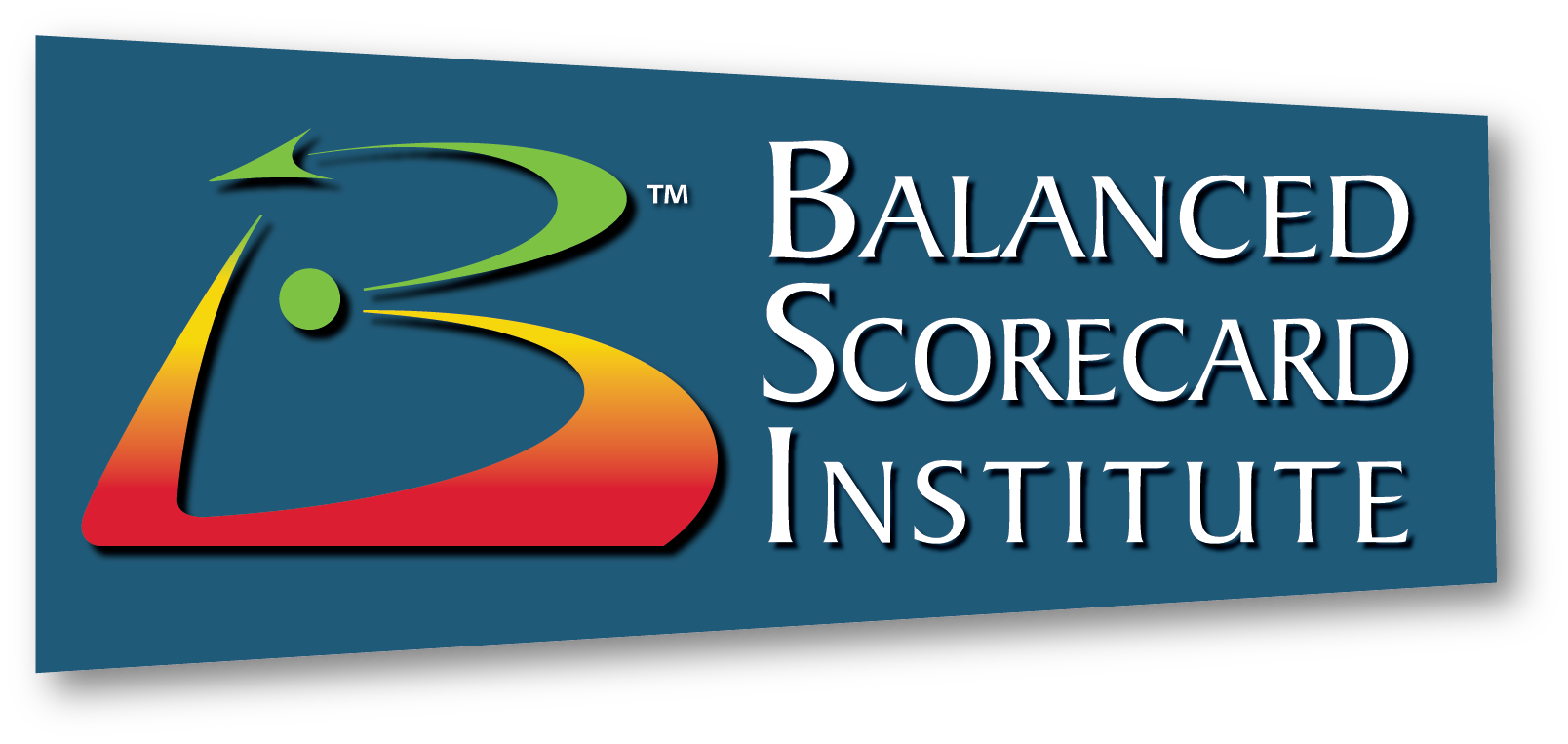Nine Steps to Success™
The Balanced Scorecard Institute’s award-winning framework, Nine Steps to Success™, is a disciplined, practical approach to developing a strategic planning and management system based on the balanced scorecard.
Step One: Assessment
Step One of the scorecard building process starts with an assessment of the organization’s Mission and Vision, challenges (pains), enablers, and values. Step One also includes preparing a change management plan for the organization, and conducting a focused communications workshop to identify key messages, media outlets, timing, and messengers. More about Assessment
Step Two: Strategy
In Step Two, elements of the organization’s strategy, including Strategic Results, Strategic Themes, and Perspectives, are developed by workshop participants to focus attention on customer needs and the organization’s value proposition. More about Strategy
Step Three: Objectives
In Step Three, the strategic elements developed in Steps One and Two are decomposed into Strategic Objectives, which are the basic building blocks of strategy and define the organization’s strategic intent. Objectives are first initiated and categorized on the Strategic Theme level, categorized by Perspective, linked in cause-effect linkages (Strategy Maps) for each Strategic Theme, and then later merged together to produce one set of Strategic Objectives for the entire organization.More about Objectives
Step Four: Strategy Map
In Step Four, the cause and effect linkages between the enterprise-wide Strategic Objectives are formalized in an enterprise-wide Strategy Map. The previously constructed theme Strategy Maps are merged into an overall enterprise-wide Strategy Map that shows how the organization creates value for its customers and stakeholders. More about Strategy Maps
Step Five: Performance Measures
In Step Five, Performance Measures are developed for each of the enterprise-wide Strategic Objectives. Leading and lagging measures are identified, expected targets and thresholds are established, and baseline and benchmarking data is developed. More about Performance Measures
Step Six: Initiatives
In Step Six, Strategic Initiatives are developed that support the Strategic Objectives. To build accountability throughout the organization, ownership of Performance Measures and Strategic Initiatives is assigned to the appropriate staff and documented in data definition tables. More about Initiatives
Step Seven: Performance Analysis
In Step Seven, the implementation process begins by applying performance measurement software to get the right performance information to the right people at the right time. Automation adds structure and discipline to implementing the Balanced Scorecard system, helps transform disparate corporate data into information and knowledge, and helps communicate performance information. In short, automation helps people make better decisions because it offers quick access to actual performance data. More about Performance Analysis
Step Eight: Alignment
In Step Eight, the enterprise-level scorecard is ‘cascaded’ down into business and support unit scorecards, meaning the organizational level scorecard (the first Tier) is translated into business unit or support unit scorecards (the second Tier) and then later to team and individual scorecards (the third Tier). Cascading translates high-level strategy into lower-level objectives, measures, and operational details. Cascading is the key to organization alignment around strategy. Team and individual scorecards link day-to-day work with department goals and corporate vision. Cascading is the key to organization alignment around strategy. Performance measures are developed for all objectives at all organization levels. As the scorecard management system is cascaded down through the organization, objectives become more operational and tactical, as do the performance measures. Accountability follows the objectives and measures, as ownership is defined at each level. An emphasis on results and the strategies needed to produce results is communicated throughout the organization. More about Alignment
Step Nine: Evaluation
In Step Nine, an Evaluation of the completed scorecard is done. During this evaluation, the organization tries to answer questions such as, ‘Are our strategies working?’, ‘Are we measuring the right things?’, ‘Has our environment changed?’ and ‘Are we budgeting our money strategically?’ More about Evaluation

BSP Certification
The Balanced Scorecard Professional (BSP) qualification is certified by:


